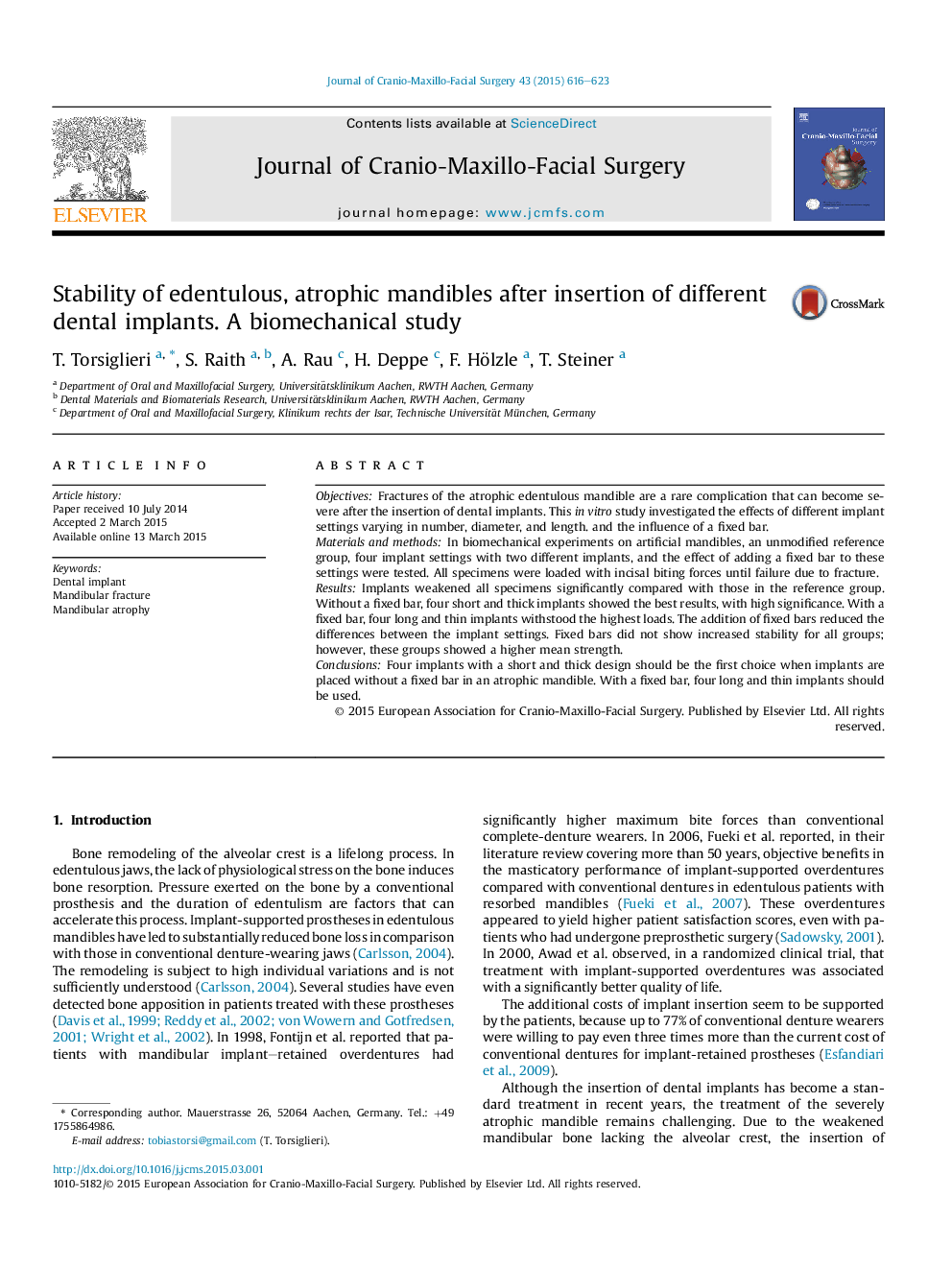| Article ID | Journal | Published Year | Pages | File Type |
|---|---|---|---|---|
| 3142529 | Journal of Cranio-Maxillofacial Surgery | 2015 | 8 Pages |
ObjectivesFractures of the atrophic edentulous mandible are a rare complication that can become severe after the insertion of dental implants. This in vitro study investigated the effects of different implant settings varying in number, diameter, and length. and the influence of a fixed bar.Materials and methodsIn biomechanical experiments on artificial mandibles, an unmodified reference group, four implant settings with two different implants, and the effect of adding a fixed bar to these settings were tested. All specimens were loaded with incisal biting forces until failure due to fracture.ResultsImplants weakened all specimens significantly compared with those in the reference group. Without a fixed bar, four short and thick implants showed the best results, with high significance. With a fixed bar, four long and thin implants withstood the highest loads. The addition of fixed bars reduced the differences between the implant settings. Fixed bars did not show increased stability for all groups; however, these groups showed a higher mean strength.ConclusionsFour implants with a short and thick design should be the first choice when implants are placed without a fixed bar in an atrophic mandible. With a fixed bar, four long and thin implants should be used.
